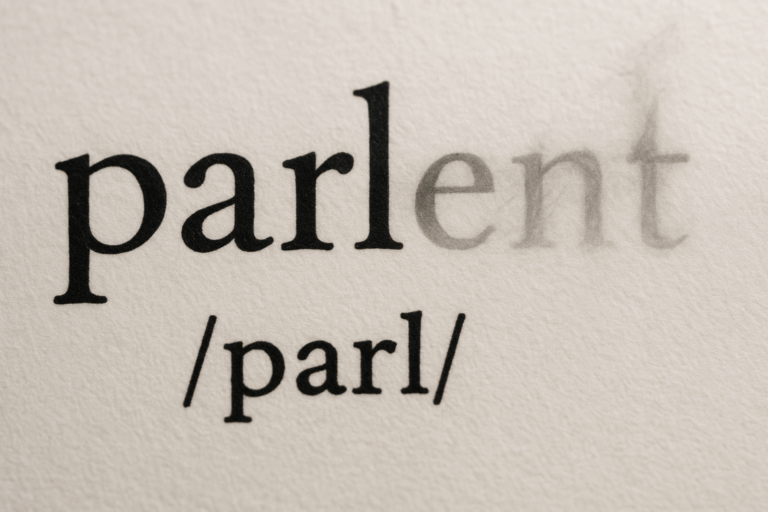Say this sentence out loud: “You’re going to the party.”
Simple enough, right? It’s a basic statement of fact. Now, say it again, but let the pitch of your voice rise at the end. Suddenly, it’s no longer a statement. It’s a question, tinged with surprise or disbelief: “You’re going to the party?” Now, try one more time. Say it flatly, with a heavy emphasis on “You’re”: “You’re going to the party.” It might sound accusatory, or perhaps it implies someone else isn’t.
In each case, the words remained identical. The grammar was unchanged. Yet, the meaning shifted dramatically. This magical, often subconscious, transformation is the work of prosody—the music of speech. While we spend years in school mastering vocabulary and grammar, it’s this unspoken melody of intonation, stress, and rhythm that often carries the real weight of our communication.
The Music Beyond the Words
In linguistics, prosody refers to the patterns of stress and intonation in a language. It’s crucial to distinguish this from tonal languages like Mandarin or Vietnamese, where the pitch of a syllable is a fundamental part of a word’s definition. For example, in Mandarin, the syllable ma can mean “mother,” “hemp,” “horse,” or “to scold,” depending entirely on the tone you use. The tone is as critical as the consonant and the vowel.
In non-tonal languages like English, Spanish, or German, prosody works differently. It doesn’t change what the words are, but it fundamentally alters how they are interpreted. It’s the layer of metadata that conveys emotion, intent, and context. It’s the difference between a heartfelt “I love you” and a dismissive, rushed “I love you” on the way out the door. The words are the same, but the melody tells the true story.
The Spotlight of Stress: Finding Meaning in Emphasis
One of the most powerful tools in our prosodic toolkit is stress—the emphasis we place on certain words in a sentence. This emphasis acts like a spotlight, drawing the listener’s attention and signaling what is most important. Consider the classic linguistic example:
“I didn’t say she stole my wallet.”
This seemingly straightforward denial can have at least seven different meanings depending on which word you stress.
- “I didn’t say she stole my wallet.” (Someone else said it.)
- “I didn’t say she stole my wallet.” (I am actively denying I said it.)
- “I didn’t say she stole my wallet.” (I only implied it, or maybe I wrote it down.)
- “I didn’t say she stole my wallet.” (I said someone else did.)
- “I didn’t say she stole my wallet.” (I said she borrowed or lost it.)
- “I didn’t say she stole my wallet.” (She stole someone else’s.)
- “I didn’t say she stole my wallet.” (She stole something else of mine, like my keys.)
Without hearing the sentence spoken, its true meaning is ambiguous. This is why text-based communication—emails, texts, and instant messages—can so easily lead to misinterpretation. Lacking the prosodic cues of speech, the reader is left to guess where the “spotlight” of stress should fall, and they may guess wrong.
The Art of Sarcasm: When Your Voice Contradicts Your Words
Nowhere is the power of prosody more apparent than in sarcasm. Sarcasm is a complex communicative act where the intended meaning is the direct opposite of the literal meaning. How do we signal this inversion? Almost entirely through intonation.
Imagine a coworker tells you that the deadline for a major project has just been moved up by a week. You respond, “Oh, that’s just fantastic.”
If you say it with a high, bright pitch, you sound genuinely thrilled. But if you say it with a slow, drawn-out, and flattened intonation—”Oh, that’s just faaan-tas-tic“—the meaning flips entirely. The melody of your voice broadcasts your true feelings of frustration, overriding the positive dictionary definition of the word “fantastic.” This prosodic signal is so powerful that the listener instantly understands the intended irony without a second thought.
The Final Frontier for Language Learners
For anyone who has learned a second language, mastering prosody is often the last and most difficult hurdle to true fluency. Traditional language education focuses heavily on vocabulary, verb conjugations, and sentence structure. Students can spend years memorizing words and rules, yet still sound “foreign” or “unnatural” to native speakers.
The reason is that the music of their native language is deeply ingrained. A native Russian speaker, for example, might use a flatter intonation that can sound curt or bored to an English speaker. A native French speaker might place stress on the final syllable of words, a pattern that sounds unusual in English. This isn’t a failure of grammar, but a clash of melodies.
This prosodic mismatch can lead to unintended social consequences. A perfectly polite request can sound demanding if the intonation is wrong. A sincere statement can sound uncertain if it ends with a rising “uptalk” inflection. Mastering the subtle, unwritten rules of a language’s intonation is what separates advanced learners from those who sound truly native.
So, the next time you’re in a conversation, listen beyond the words. Tune in to the rise and fall of the speaker’s voice, the rhythm of their phrases, and the words they choose to stress. You’ll find that the most profound, emotional, and truthful parts of communication aren’t in what is said, but in the unspoken melody of how it’s sung.








